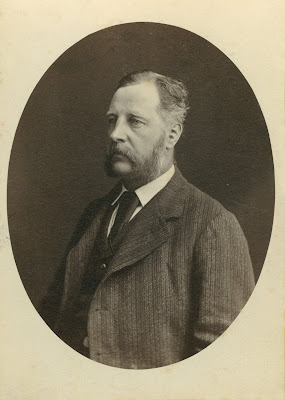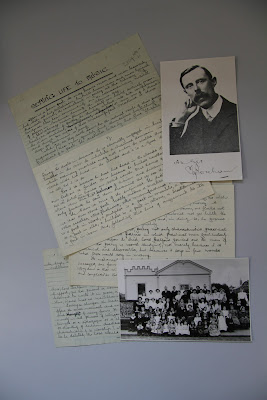I know I’m a bit late in the week posting this and it isn’t strictly a Hocken thing but you might be interested anyway. All these activities extend over the month of May.
The Archives and Records Association of New Zealand (ARANZ) has selected From the Hangi pit to the Weetbix kid: Recording the history of food in New Zealand as the theme for Records and Archives Week 2011 (RAW). A programme of three exhibitions and a Lunchtime Seminar series has been arranged for the month of May.
The Lunchtime Seminar programme will be held 12.00 noon in the Dunningham Suite, 4th Floor, Dunedin Public Library, The Octagon, Dunedin.
Tuesday 10 May – Dr Jim Williams – “The well fed Māori of yesteryear”. Jim is a Senior Lecturer in Te Tumu, the School of Māori, Pacific and Indigenous Studies. Dr Williams’ research interests include Ngāi Tahu history and language and resource management including mahika kai, as well as comparisons with other Indigenous peoples.
Tuesday 17 May – Dr Michael Stevens – “Muttonbirding in Southern NZ”. An overview of the seasonal harvesting and preservation of juvenile titi (sooty shearwaters) by southern Kai Tahu from the so-called Titi Islands – several dozen islands adjacent to Rakiura/Stewart Island. This activity is commonly known as muttonbirding. The talk will be given by Dr Michael J. Stevens, an historian and a “muttonbirder”.
Tuesday 24 May -Mike Lord – President of Federated Farmers Otago speaking on changes in farming and farm recordkeeping. The primary producers of food in NZ have gone from being for the most part family businesses keeping records in diaries and notebooks to large corporate operations using sophisticated electronic systems to keep track of business.
For further information regarding the talks contact Anna Blackman, ph 4798867, anna.blackman@otago.ac.nz
Exhibition Programme
1. Feeding A Nation: Our Provincial Pantry
Archives New Zealand in Dunedin is holding an exhibition entitled “Feeding A Nation : Our Provincial Pantry” as part of Records and Archives Week 2011. This exhibition will open on 2 May, and run until 10 June 2011, at Archives New Zealand’s Dunedin Regional Office, 556 George Street, Dunedin.
This exhibition features an assortment of archives that illustrate the government’s involvement in food and administration in the Deep South.
The government’s role in the regulation of the food industry is demonstrated through correspondence relating to tutu poisoning in the 19th century, and documents relating to the transportation of fruit by rail, the testing of milk for radioactive material, and the debate over the presence of cats in food outlets in the 20th century.
Food in government institutions is represented by ration and requisitions books from Dunedin Hospital and Seacliff Lunatic Asylum, through to documents relating to the school milk scheme and the quality of meat in Dunedin’s 19th century gaol.
Also featured are photographs and set designs of Alison Holst’s earliest television cooking shows produced by DNTV-2 in the 1960s and 1970s, and a selection of mid-20th century food packaging kept by Department of Health officials during their inspections.
Films created by the National Film Unit on a variety of culinary topics will also be shown.
For further information, please contact: Peter Miller, Dunedin Regional Archivist, Archives New Zealand, Tel: (03) 477 0404. Email: dunedin@archives.govt.nz. Archives New Zealand’s Dunedin Regional Office, 556 George Street, Dunedin.
2. Communing through Food, Faith and Fellowship
The Presbyterian Archives Research Centre offers a series of byte-sized entrees that highlight the Church’s relationship and interaction with food.
We invite you to partake in the delights of Ladies a Plate: a display of photographs and ephemera which highlight occasions when church people gather to share food. At the Archives Research Centre, Hewitson Wing, Knox College, Arden Street, Dunedin throughout the month of May.
Enter the blogosphere and feast on the Food Production displays found at www.preshist.wordpress.com:
· The production of Arrowroot
· The development of Te Whaiti Maori Boys Farm
· Feast and Famine – Overseas Aid
The act of eating and sustaining our bodies cannot be separated from our spirits. As communities of faith the age old tradition of a shared meal brings us together to share our stories, celebrate our history, reflect on our faith, and build our communal outreach.
For further information, please contact: Yvonne Wilkie, Director of Archives, Archives Research Centre, Hewitson Wing, Knox College, Arden Street, Dunedin. Tel: (03) 473-0777 Email: Yvonne.wilkie@knoxcollege.ac.nz.
3. From the Paddock to the Plate – Archives from the family farm
ResearchWriteNZ presents images, documents, ephemera and other records describing the changing patterns of food production through four generations on one property over six decades.
Exhibition is open from Monday 2 May until Friday 3 June 2011, in the Dellow Seminar Room.
Hours: 9.00 am – 5.00 pm Weekdays and 10.00 am – 1.00 pm Saturdays.
Alternative viewing times are by appointment and special interest groups are welcome.
For further in formation, please contact: Dr Jennie Coleman, Tel: (03) 470 1109 or 027 222 4214 Email: jennie@researchwrite.co.nz. 1st Floor, Capitol Building, 67 Princes Street, Dunedin (opposite Savoy Restaurant). http://www.researchwrite.co.nz
 20 May 2011 marks 150 years since Gabriel Read discovered the payable gold that led to the Otago gold rush in an area now known as Gabriel’s Gully near the Otago town of Lawrence. This momentous discovery and the gold rush that followed rapidly transformed the face of Victorian Dunedin. This exhibition, which explores the use of gold in contemporary art and photography, has been mounted to commemorate this sesquicentennial. Artisans and artists have been awe struck by this highly malleable and alluring precious metal for thousands of years.
20 May 2011 marks 150 years since Gabriel Read discovered the payable gold that led to the Otago gold rush in an area now known as Gabriel’s Gully near the Otago town of Lawrence. This momentous discovery and the gold rush that followed rapidly transformed the face of Victorian Dunedin. This exhibition, which explores the use of gold in contemporary art and photography, has been mounted to commemorate this sesquicentennial. Artisans and artists have been awe struck by this highly malleable and alluring precious metal for thousands of years. At a time of economic hardship when the price of gold is soaring, the contemporary art and photography included in this show encourages us to look beyond the monetary worth of this precious metal and to value gold for its physical properties and symbolic associations.
At a time of economic hardship when the price of gold is soaring, the contemporary art and photography included in this show encourages us to look beyond the monetary worth of this precious metal and to value gold for its physical properties and symbolic associations.
 A small number of historical items including a fifteenth century Book of Hours from, an 18th century Russian ikon, late nineteenth century gold-toned photographs by Rev John Kinder and an album of photographs of Chinese miners who worked in various Otago goldfields, provide a historical context for the contemporary works.
A small number of historical items including a fifteenth century Book of Hours from, an 18th century Russian ikon, late nineteenth century gold-toned photographs by Rev John Kinder and an album of photographs of Chinese miners who worked in various Otago goldfields, provide a historical context for the contemporary works.
















